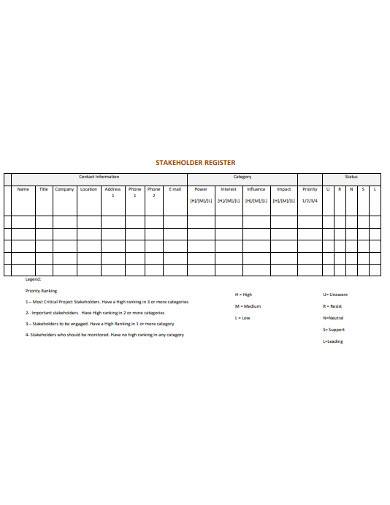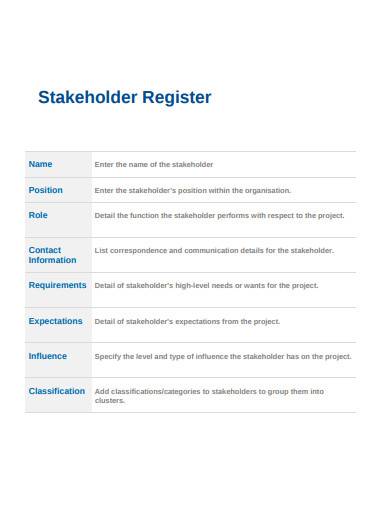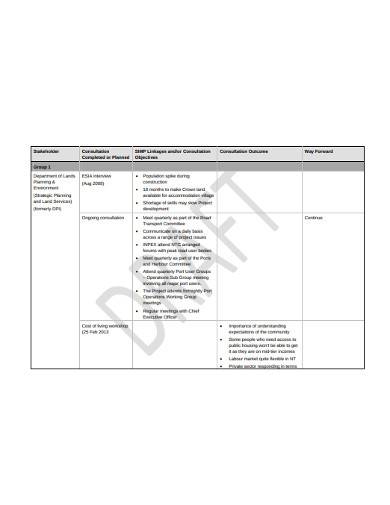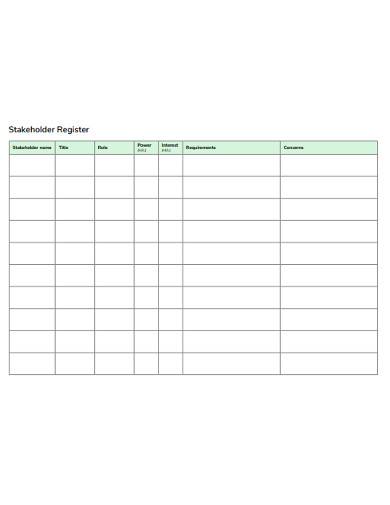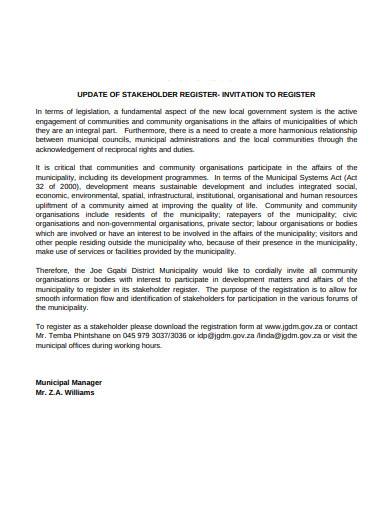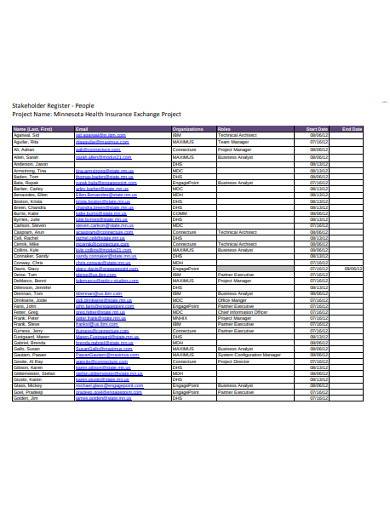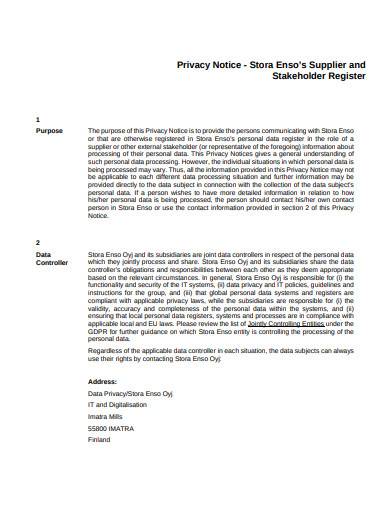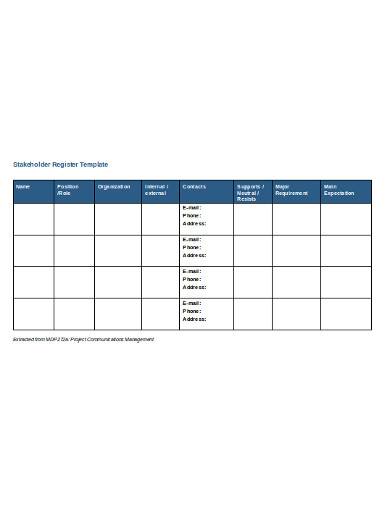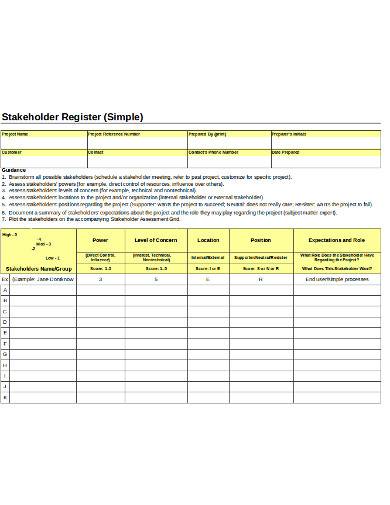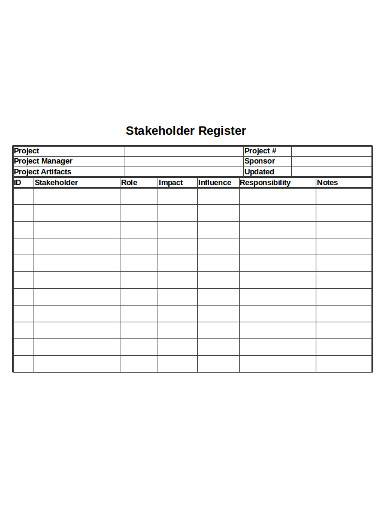How important are the stakeholders in project management? The answer is simple. They are the reason why you are implementing the project. Whether you are conducting market research or handling a website development project, identifying the stakeholders of your project plays a vital role in completing it, because you don’t do something if you don’t need it. To formally identify the project stakeholders, you will need a stakeholder register.
What is Stakeholder Register?
A stakeholder register is a document that you have to create during the early stages of a project. It contains all the relevant information about its stakeholders. Keep it in mind that a stakeholder can be an individual, a group of people, or an organization that has an interest in the outcome of the project. Additionally, the project will affect the stakeholders directly or indirectly. Sponsors, leaders, and subject matter experts are the examples of stakeholders that you can include in the stakeholder register of your project.
While it is true that you should identify the project’s stakeholders in the preliminary stages of the project, you must know that you may find more stakeholders throughout the project development. If it is the case, you will have to update the document to include these extensions. Nevertheless, your project stakeholder register should consist of stakeholder identification, stakeholder assessment, and stakeholder classification, which are the major components of a stakeholder register. For smaller companies, you don’t have to create a separate document for stakeholder analysis and management strategy. You can include it here, instead.
What are the Common Types of Stakeholders?
During a project development or implementation, this project may affect differently to different people. That is why it is vital to know the different types of stakeholders during the stakeholder analysis.
1. Primary stakeholders
These are the people that the project action plan will directly affect either positively or negatively. It is crucial to take note of these people to develop another corrective action plan if necessary to deal with the effects.
2. Secondary Stakeholders
Although the project does not directly affect these individuals, as a project leader, you still need to document this information because there are chances that the effects of the project to them, although not directly, are enormous. These stakeholders also referred to as intermediaries.
3. Tertiary Stakeholders
These are the people that receive the least impact of a particular project action.
10+ Stakeholder Register Samples
Before you create a stakeholder register, take a look at the following examples and get an overview of the outline of a stakeholder register.
1. Stakeholder Register Sample
2. Basic Stakeholder Register Template
3. Stakeholder Engagement Register Sample
4. Stakeholder Registration Form Sample
5. Standard Stakeholder Register Template
6. Update of Stakeholder Register Sample
7. People Stakeholder Register Sample
8. Privacy Notice Stakeholder Register Template
9. Stakeholder Register Template in DOC
10. Simple Stakeholder Register Sample
11. Stakeholder Register in Excel
How to Develop a Stakeholder Register?
Now that you know how a stakeholder register looks like, you should know how to do it to ensure that you will create a productive document. Whether you are conducting research analysis for a particular event or maintaining a construction project management, you can use the following instructions to ensure that you will build your stakeholder register correctly.
1. Identify the Stakeholders
The first thing that you should include in your stakeholder register is the personal information of a stakeholder. Take note of its name, title, contact information, and role in the project/organization. These people may not attend during the entire process of the project. With this information, it will be easier for you to contact the stakeholders if you need something from them that will help with the project progress.
2. Create an Assessment
In this part of the stakeholder registry, you will write down the specifications and the expectations of the stakeholders. You will also include the nature of the communication that you will need and how often you will communicate with them. Additionally, you will assign each stakeholder with its interest and influence in the project.
3. Classify the Stakeholders
Aside from identifying the stakeholders, it would help if you also classify them depending on the criterion that you will use for the project. You may categorize them or assign attributes based on their power or interest in the project. You will use this information to develop a stakeholder analysis and management strategy.
4. Develop a Stakeholder Analysis and Management Strategy
Once you have classified and identified the stakeholders, you have to develop a stakeholder analysis and management strategy to manage them according to their requirements and influence on the project. You will have to create a separate plan for the highly influential stakeholders and the ones that have a lesser impact on the project. Keep it in mind that the stakeholder register may include sensitive information. If it is, you can create a separate document for this part of the stakeholder register.
Just like the project analysis, you have to create a stakeholder register to complete a project. Without this document, your project will have no direction. Bookmark this page and use it as a reference in creating a better stakeholder register for your project.
Related Posts
19+ Sales Receipt Templates
43+ Free Payroll Templates and Samples
8+ Sample Vendor Registration Form
8+ Sample Patient Registration Form
9+ Sample Registered Nurse Resume
9+ Sample Voter Registration Form
13+ Sample Selective Service Registration Form
43+ Printable Payroll Templates
8+ Sample Registered Nurse Job Description
8+ Sample Employee Registration Form
18+ Wedding Registry Checklists
8+ Sample Registration Forms
10+ Sample RN Resume
11+ Nurse Reference Letters
7+ Sample Audition Form

